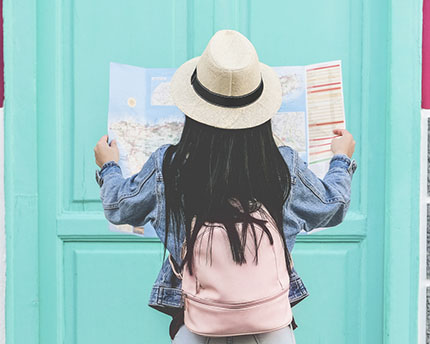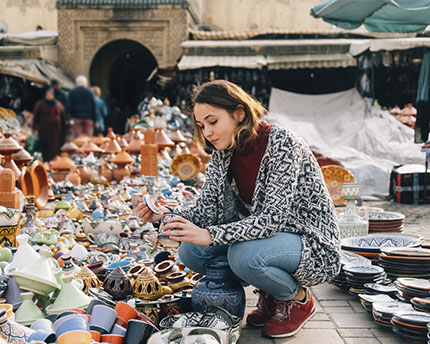The city of Marrakesh is considered by many to be the gateway to Morocco. It’s one of the four imperial cities, along with Fez, Rabat, and Meknes, and its World Heritage monuments and its pulsating rhythm will win you over immediately.
It’s known as “the City of Four Colours”, due to the red of its houses and land, the green of the tiles and palm trees, the white of the snowy Atlas Mountains, and the blue of the sky. Among its main attractions is the souk, the traditional market, which is also the largest in the country. Whether you plan to make a purchase or not, you must immerse yourself in this maze of sensations.
History and significance of the souk in Marrakesh
The main market is located inside the Medina, in the heart of Marrakesh. Founded by the Almoravids around 1070, the city became the capital for this nomadic group. Some of the 12th century walls can still be seen today.
The epicentre of the Medina is the Jemaa el Fna Square, one of the most bustling squares in all of Africa. The surrounding buildings are presided over by the minaret of Koutoubia. All kinds of figures, snake charmers, acrobats, musicians, fakirs, and dancers meet in this square. The biggest spectacle is at night, when it becomes a genuine open-air restaurant with hundreds of food stalls. A frenetic place full of life.
Rulers have resided over the centuries to the south of the square, where the Royal Palace stands today. To the north, on the other hand, lies the intricate labyrinth that is Marrakesh’s souk. The word “souk”, from the Arabic suq, which means market, and in addition to all kinds of trading activities, is also a place where the life of the city unfolds.
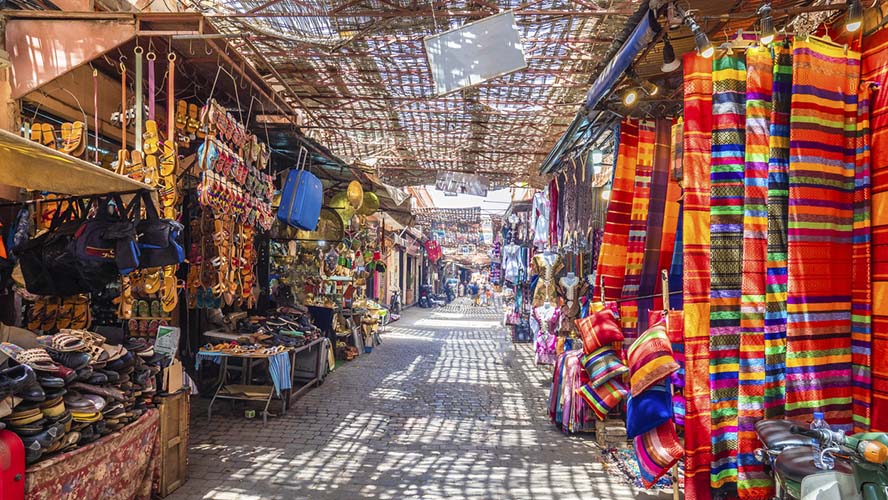
Tribes travelling through the desert would meet at these places, where they would leave their caravans, trade, drink tea, and socialise. Gradually, these makeshift markets took shape and were organised both socially and in terms of space.
The souk in Marrakesh, with over eight centuries of history, has always operated on the basis of different guilds. First came the weavers and the leather tanners, in a separate area. Each activity was located in a specific part of the souk, with its own rules and hierarchies, and a clear distinction between apprentices and masters.
The central part of the souk was reserved for luxury goods. Products that could be a nuisance to the neighbours because of their smell, such as leather, were located in the outermost part of the Medina. This same layout is still visible today. Ancient traditions and forgotten trades are still present thanks to these guilds.
The art of haggling in the souk in Marrakesh
To buy something in the souk, haggling is a must. It’s a sort of dance between the buyer and the seller. You have to let yourself be carried away by this social convention and enjoy the little bit of fun it brings. The seller will usually recognise where you come from and chat with you in your own language with no problem at all. Good humour and jokes make it all the more enjoyable. It’s highly advisable not to show interest in a particular item, but to walk around the stall and check the quality of the products directly.
Seeming to know the prices or that you know something about materials will benefit you. Let them say the price first and divide it by two or even three, as that will be the most suitable amount to negotiate for. Typically there will be a nice tug-of-war, until you reach an agreement between the two of you. If you end up not wanting to make the purchase, don’t let yourself be tricked or talk too much, as they are true experts in this art.
The different souks of Marrakesh
When you enter the souk, you’ll see two main streets, Rue Semarine and Rue Mouassine. Today, over 2,600 craftsmen congregate here, organised into some 40 guilds. Although it’s open all day, except on Fridays, the best thing to do is to go in the morning and let yourself be carried away by the different souks, which are grouped according to the products on sale:
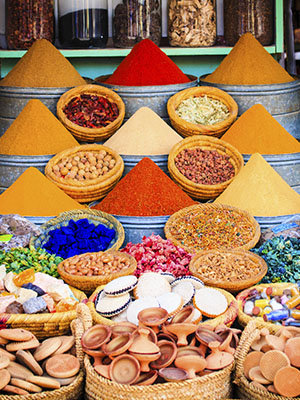
- Laksour souk. It’s one of the largest and, what’s more, it’s covered, so you can take shelter if it’s hot. Among the thousands of objects, you’ll be struck by the large number of lamps.
- Kchacha Souk. This is a somewhat quieter area, where the main attractions are fruit and dried fruits and nuts. If you work up an appetite, buy a bag to munch on as you stroll around.
- Smata Souk. The distinct smell of leather will give you an idea of the products on sale here. The colourful slippers stand out on the stalls, but so do the belts and handbags.
- Sebbaghine Souk. The dyers’ souk is one of the most photographed. Freshly dyed fabrics hang on clotheslines as they dry and are a very peculiar sight.
- Semmarine Souk. This is the main leather souk, which is interspersed with stalls where you can buy delicious cake.
- Souk Ableuh. Food is ever-present in this souk. In this area, for example, you can find only olives.
- Spice Square. Around this square, you’ll find a number of shops selling rugs, and in the centre of the square are the spice stalls.
What to buy at the souk in Marrakesh
Marrakesh is a major producer of leather, so it’s always a good idea to take some leather goods with you. A nice pair of hand-carved and hand-stitched slippers or a handmade wallet are a great souvenir to take home.
Berber rugs and kilims are another speciality in this souk. Wonderful pieces with a range of designs and sizes. If you can’t take with you on the plane, you can have it delivered to your home, or opt for some beautiful fabrics for cushions.
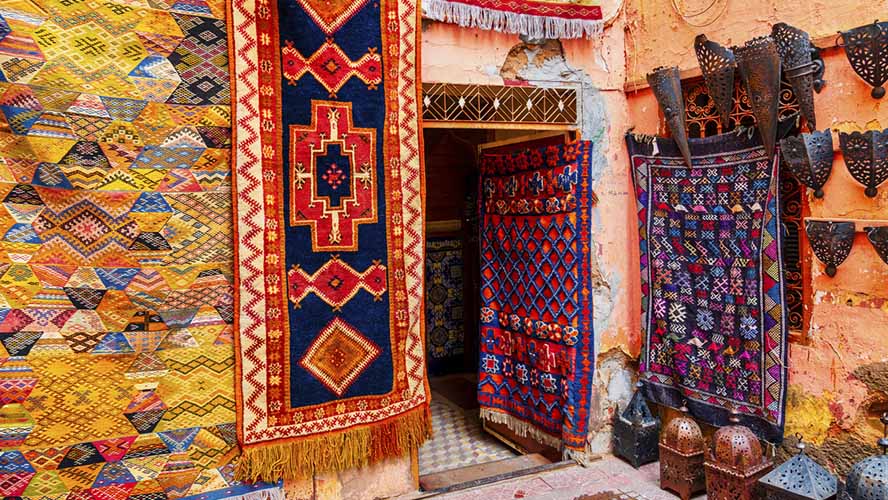
The cobalt blue colour, so characteristic of Fez ceramics, can also be found here in vases, tiles, and plates. It would make an ideal gift for someone special.
In terms of cosmetics, argan oil is king. Its healing and moisturising properties make it the foundation of Moroccan aesthetics. The famous kohl will be the perfect match for your eyes. Don’t forget to try natural magical lipsticks and henna for temporary tattoos.
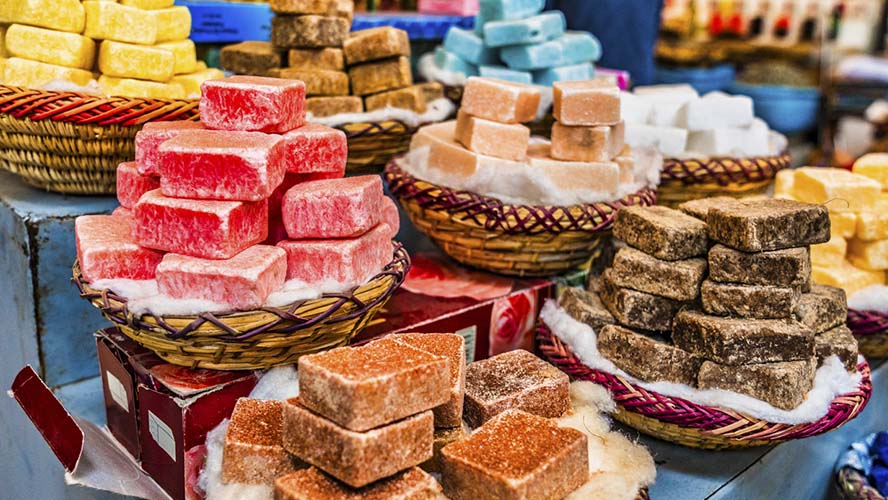
Typical foods round off the list of must-haves. Although traditional almond and honey pastries will make your mouth water, don’t forget to buy green tea, one of the country’s best-known drinks, as well as dates and olives, which have a totally different flavour to what you’re used to. And, above all, don’t forget to buy spices. Ras el Hanout is a must, as it spices up most dishes.





























































